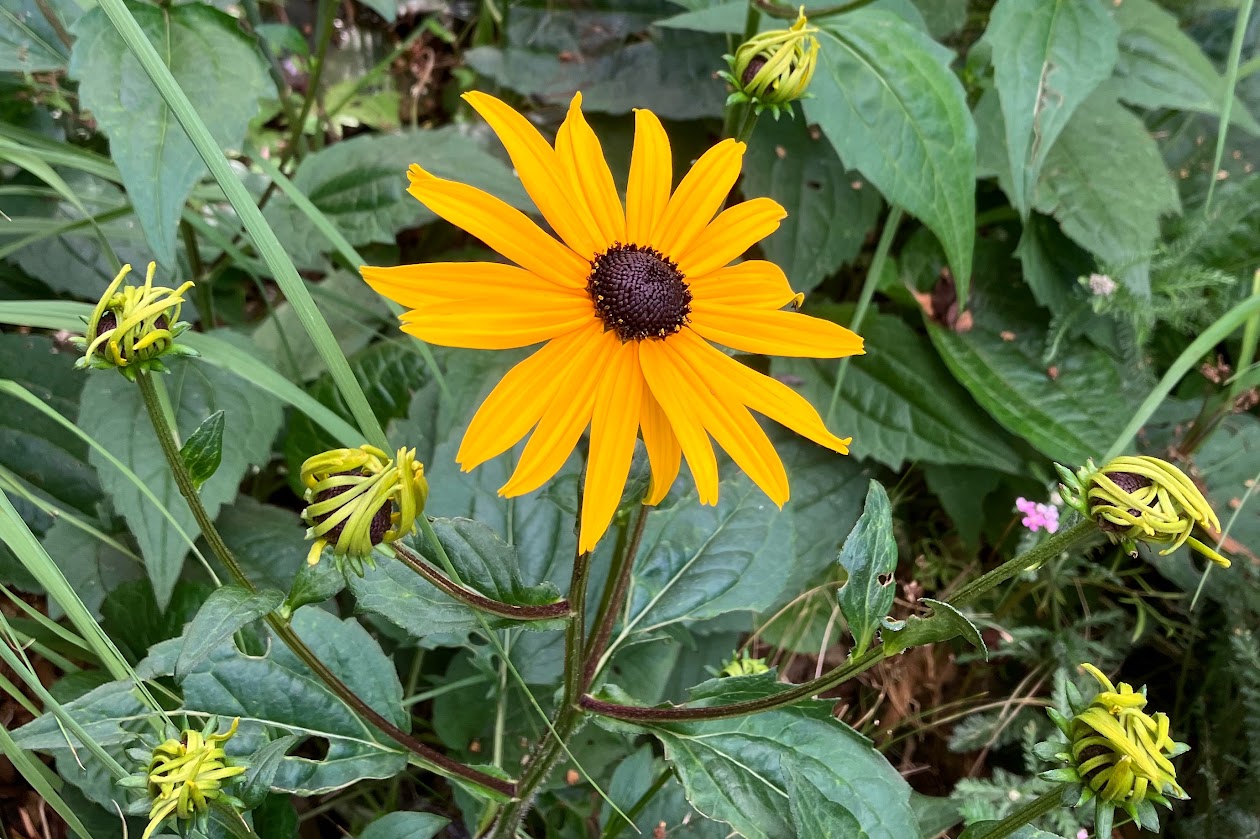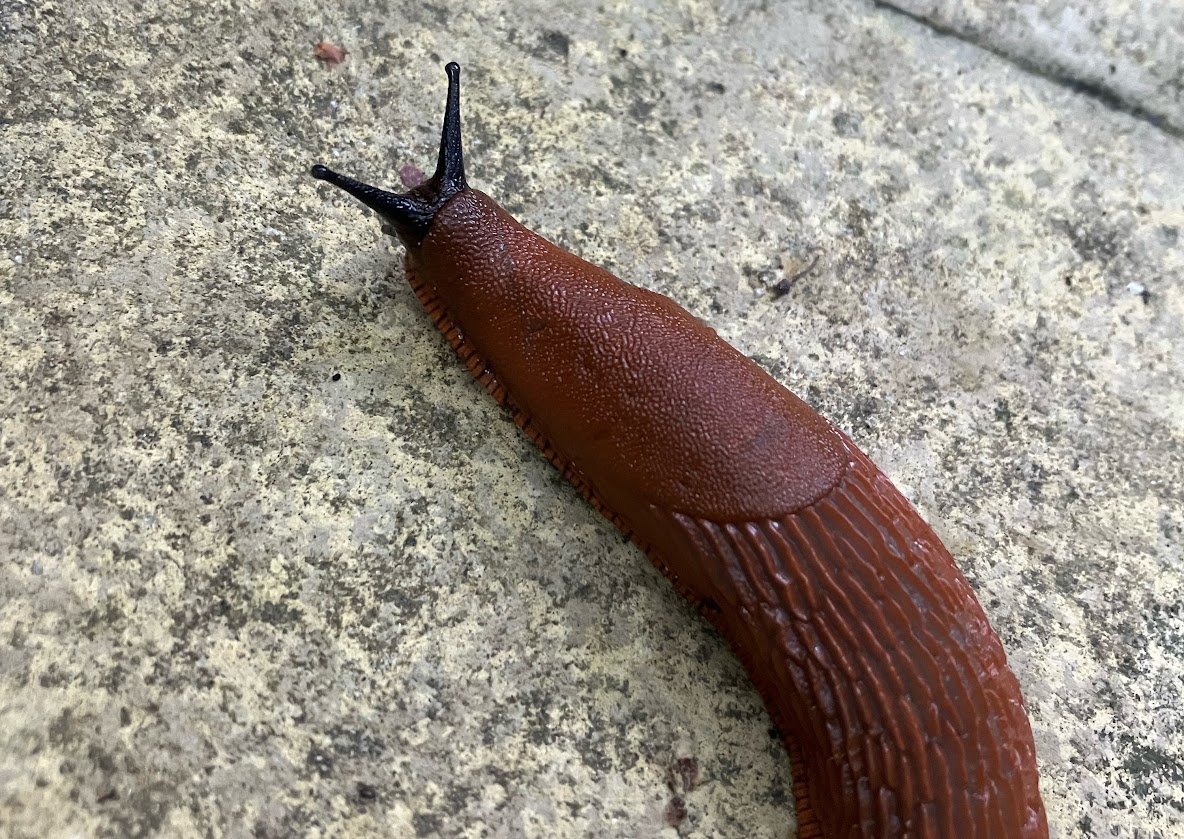Small, shell-less snails
26 August 2023

In the warm dusk of a wet day, I watch a flotilla of slugs embark across the garden path. Spaced about a foot apart, and keeping level with each other, they are making their slow migration from the vegetable patch to the flower bed. They are Arion vulgaris (Spanish Slug), I believe, and their long, brown bodies are about the length and width of a finger. From my aerial view they seem orchestrated, like battleships plotting the sea. It is as if they each awoke beneath their cold slabs with the same plan at the same time; squeezing their soft, mucoid bodies out into the night air, they smelled the scent of the green things not yet eaten.
Having consumed all but the last stringy spines of brassicas, and with nothing left but borage and beans, some race memory is driving them on. Over the way, on the other side of the garden, crocosmia nods with golden rod, teasels bow to panicum, and new rudbeckias crouch down low between them all. Taller, older, tougher, Black Eyed Susans have nothing to fear; they have a coarseness now akin to sunflowers. It’s the younger Asteraceae, still rosetted and close to the ground, they are the slugs’ delight; sown late in the season, perpetually trying to catch up while relentlessly getting eaten at every damp opportunity.
Turning their heads from side to side as they glide, the slugs’ antennae extend and retract, extend and retract, mapping the territory. They have two sets of antennae: the upper pair are optical tentacles that see and smell the world, while the lower pair feel and taste it. There is a quiet grace to their gentle movement, a slow rhythm that suggests the calm confidence of a species that thinks itself unassailable. Unlike Gilbert White’s ‘small shell-less snails, called slugs’, Arion vulgaris is large. It’s a recent arrival in the UK, turning up at some point in the last century, long after White’s time. The observation that his slugs ‘silently and imperceptibly make amazing havock’, is just as applicable, however; Arion vulgaris is considered an invasive species.
Small sounds come from the woodpiles that line the fence. The slow, cautious pad of webbed hands is followed by the drag of long legs and wide feet. I don’t know if my frogs eat my slugs, but I like to think at least some of the gastropods go to feeding up the amphibians. If it were daylight, I would scoop up the slugs with a trowel and deposit them on the birdfeeder. In the gathering gloom, I leave them alone to continue their spineless progression. Utterly intent on the rudbeckias, they seem entirely unaware of the vertebrate forces advancing.
I turn on my torch to take one last look at the coneflowers. The last of the rain clings to the leaf hairs and shines like trims of so many pearls. In the stark, white light I imagine both slugs and frogs holding their breath, alarmed, shrinking back from the beam. Switching it off, the garden returns to darkness, and whatever interactions and outcomes play out under the stars, they are not mine to see.
*‘[…] small shell-less snails, called slugs, which silently and imperceptibly make amazing havock in the field or garden’ - Gilbert White, The Natural History of Selborne (1789).

